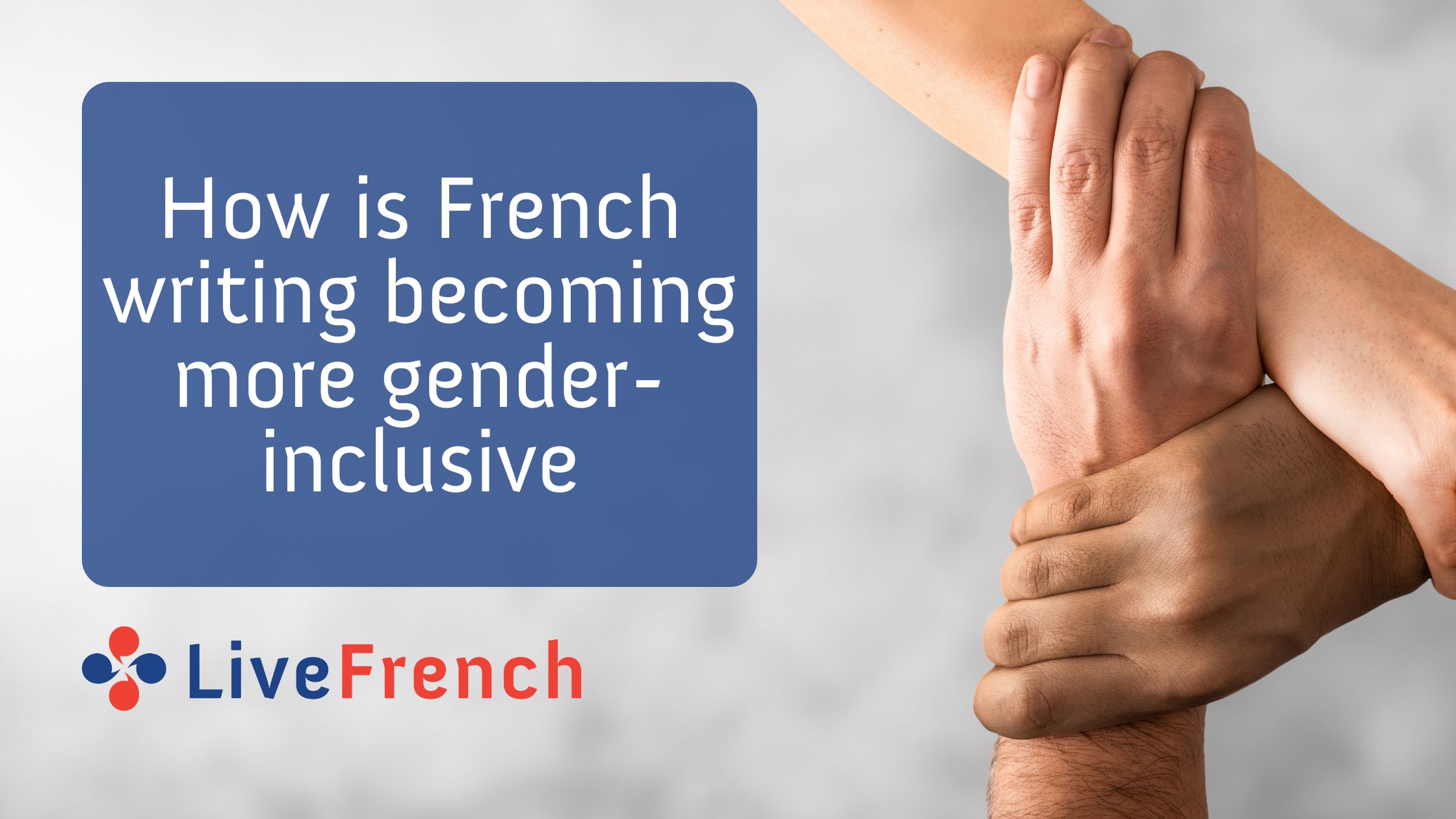Last updated on December 15th, 2023 at 02:46 pm
The Académie Française has made a statement against gender-inclusive writing.
Gender-neutral French writing is seen as heavy and useless by some while others think the French language should evolve to display and encourage a more egalitarian society.
This is a debate about the French language. This is a debate about feminism. This is a very political debate about our society.
Before we enter this debate, let’s talk about the gender-neutral rules to apply when writing in French.
Gender-neutral rules when writing in French
Titles and professions have a feminin version
In the past, many professions in French didn’t have a feminin version. So if we needed to talk about a female Mayor or Minister for example, we used to say “Madame le maire” or “Madame le ministre”. Nowadays, it’s more common to use “la maire” or “la ministre”. “L’auteure” (the female version of “l’auteur”), “la professeure” (the female version of “le professeur”) have also quite recently been used.
Duplicating terms
In order not to favor the masculine over the feminine and to maintain equity, gender-inclusive writing recommends splitting the terms and listing them in alphabetical order. So we will say “les femmes et les hommes”, “les citoyennes et les citoyens de ce pays”, “les étudiantes et étudiants”, and so on.
Duplication of terms can be avoided with an abbreviated form
When the words have the same root, we can avoid duplicating the terms by combining the different possible forms to be inserted between dots. For example: “les étudiant.e.s”, “le·la sportif·ve”
Verbs and adjectives vary according to the last term listed
According to French gender-inclusive writing, the masculine does not prevail over the feminine. They vary according to the last term listed. For example: “Les hommes et les femmes sont belles.”
New pronouns
These pronouns are: celleux (celles et ceux), iel ou illes (il ou/et elle), ielles (ils ou/et elles), iels, elleux (elles et eux).
What to think about gender-inclusive writing in French?
The current French language is the result of a long and slow evolution of the language. Successive linguistic reforms have aimed to simplify the language, to make it more up-to-date.
So, wanting to reform the French language should not be something to fight against.
From a purely aesthetic point of view, French gender-neutral writing adds a certain heaviness to the language and does not enhance it. It is also an unweaving of the rules to which we are accustomed and which reflects our history and our past.
But above all, inclusive writing is highly political and politicized. When a newspaper decides to embrace inclusive writing, it’s a meaningful decision. It is an affirmation of support for the most advanced feminism where even our linguistic heritage must be threatened.
Feminine and masculine versions presented in an equal manner is the claim of this movement for gender-neutral writing in France and around the world. Time will tell if inclusive writing will become mainstream and become the new norm.







